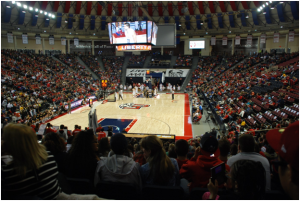
Changing the rules. Will new lines start getting drawn on courts, again?
The NCAA Men’s and Women’s Basketball Rules Committees have recently approved different packages of rule changes as they often do every two years. Some of the rules are needed, some are interesting, and some are perplexing. All of these changes still need approval by the NCAA Playing Rules Oversight Panel which meets June 8.
The tendency is that changes approved by rules committees don’t all get approved by the oversight panel. I will point out many of the proposals being presented to the oversight panel and tell you why I do or don’t like them especially when it pertains to Division III.
Links:
Men’s changes (from the NCAA)
Women’s changes (from the NCAA)
But first, I wanted to point out the most glaring problem. Both rules committees approved different packages of changes. I understand why each gender has its own rules committees, but in basketball they are clearly not talking to one another. This is a problem.
In sports like lacrosse, the men’s and women’s game are dramatically different. In essence they are two different sports. However, in other sports like soccer the rules are nearly identical. Now those going to lacrosse games have known the difference in the two sports that has existed nearly since the creation of those sports especially as an NCAA sport. So fans of lacrosse don’t get confused by the dramatically different rules and regulations. Those in soccer do expect the sports to be the same and don’t have any trouble watching either game to understand what is happening or what rules are being enforced.
The problem with basketball: the game is intended to be the same for both genders like soccer, but the NCAA rules committees treat their sports like they are lacrosse. It is crazy and has been causing confusion for years especially in a sport that outside of higher-end Division I is played as men and women double-headers.
Many have complained or commented that the sports need to be more similar. Coaches understand that for fans to appreciate the game and understand what is going on during a game, the rules have to be similar. The women’s game added the 10-second backcourt violation two years ago and even adjusted their three-point line to the men’s line. Of course, the fact the women didn’t have a 10-second violation or a different three-point line also speaks to how these committees don’t seem to communicate with one another and pretend the other doesn’t exist.
That has to stop. This sport has to be either treated the same or made completely different. I am a proponent for the being treated the same with the same rules and regulations, though I am completely fine with two different sized basketballs. When fans are watching a game, it is better for them and the sport if they can then turn on another game in a different gender and understand what is going on. Imagine if you showed up to a double-header and one game was played under one set of rules and the other under a completely different set. How long do you think it would take you to fully grasp what was going on?
I could go on and on about this, but let’s move on to the approved recommendations, because that will bring to light even more differences. We start with the men:

Could the arc get bigger. Proposal would expand from 3 to 4 feet.
Restricted-area arc:
The rules committee wants to continue reducing the number of collisions at the basket and has decided to follow the NBA and expand the arc under the basket from a three-foot arc to a four-foot arc. I’m not sure if this is good or bad. I do think the arc has helped understand if a defender is truly in a place on the floor they can affectively defend especially in a standing position before an offensive player goes up for a basket. However, I think if they keep fiddling with the rule it will never be something people grasp especially if the size of the arc is just going to change every few years (by the way, FIBA has the international arc at approximately 4.1 feet).
I’m fine with this being adjusted as long as we can leave well enough alone after this. It should also be pointed out that Division I men will go to the new arc this coming season while Division II and Division III will institute the new arc for the 2016-17 season (constantly repainting courts is money lower division schools don’t have laying around in their budgets).
I somewhat endorse.
Pace of Play:
There are a few changes in this category, so let’s break down each:
30-Second Shot Clock:
This one has been a long time in coming. For many people, trying to understand why men’s basketball had the longest shot clock in the entire game (including high school) was perplexing, but it was shrugged off since despite the women’s clock being at 30-seconds they didn’t have a 10-second violation like in the men’s game. I think people thought the two differences evened themselves out. Once the women added the 10-second call and didn’t change their shot clock, more people wondered why the men’s game was so “slow.”
The men’s game has needed to shorten the shot clock for so many different reasons they finally got around to experimenting with it (in last year’s non-NCAA post-seasons) and implementing it. Now there will be more possessions in a game and offenses will need to move quicker. It also allows scoring to increase.
Some have complained that shortening the time will lead to more bad shots, worse shooting percentages, and more turnovers. This is akin to warmongering. Last year’s non-NCAA post-seasons did not prove that as numbers did not go down (they went up in many cases, especially average scoring) and the same was said when the women added the ten-second violation. The change in the women’s game did not equate to dramatically more turnovers or worse shooting.
Here’s the key: these players are coming up from high school where there is already a shorter shot-clock, ten-second violation, etc. They are used to these rules and pace of play already. Furthermore, if a person is rushing to get a shot off with two-seconds left on a 35-second clock… they are still going to rush to get a shot off with two-seconds left on a 30-second clock. The only difference is five seconds of actual game clock haven’t elapsed. And for those who state this will hurt offenses that have long offensive sets – that is the EXACT reason this rule needed to be put in place. Offenses that run plays lasting 20 to 30 seconds are killing the game. And how in the world do these offenses work when the ball goes out of bounds or there is a kicking violation and there is less than 15 seconds remaining on the clock?! They go to a shorter offense. Seems they should go to that offense, period.
I endorse.

Could the number of timeouts change? In some ways, I hope so.
Timeouts:
I am not sure how these will be adjusted for Division III, but according to the NCAA the proposal is to remove a second-half 30-second timeout for teams (essentially removing one team timeout per game) and strictly enforcing resumption of play after a timeout.
If reducing the number of timeouts in all games in all divisions including non-media games is the plan, I am all for it! There are too many time outs, especially the long-versions. I would love to see the number of 30-second and long timeouts switched so there are maybe four short timeouts and two long ones per game. Too much time is spent on the sidelines especially in media games!
And I would love to see the refs pick up the pace of play in general, but especially after timeouts and for substitutions. The new rules would have the refs warn a team and then one technical foul shot will be given each subsequent time a team is called for taking too much time. Sure, the technical shot will slow things down, but a coach and team aren’t going to want to lose points at the line, so that is going to be work itself out just fine.
Other pace of play rule changes:
- In media games if a team calls a timeout within 30 seconds of a media break or following the point when a media break would be taken, it becomes a media timeout.
Great! This will cut down on the number of times the game is stopped for “extra” breaks. (By the way, women added this rule last year to much success.)
- A coach can no longer call timeout when the ball is in play.
Perfect! Too many times a coach bails his players out or calls timeout in the course of play. Or worse, the coach tries calling timeout, but because the refs are paying attention to the game they don’t see or hear it. This removes all of those scenarios and puts the game in the player’s hands when the ball is in play. Terrific.
- Teams get ten seconds… only ten seconds… to advance the ball up to the front court.
Terrific! There are some exceptions to this (notably a foul on the defense), but overall this is a way of rewarding the defense for good play and not bailing out an offense who are struggling especially if they call timeout.
- Reduce the amount of time a coach has to replace a disqualified player.
I would love to see NO time allowed, but I will take this change. Too many coaches either stall or use the time as a free timeout. You can’t tell me a coach isn’t aware of who is on the floor that is in foul trouble (with some exceptions), so to give them time to figure out who they are going to substitute is ridiculous.
All in all, I endorse!
Faking Fouls:
I played soccer throughout my life and in college and nothing drives me more crazy than flopping. If I was fouled and I went to the ground, it was because it was that hard a foul not because I was trying to bait the ref into a call. I consider it a part of sportsmanship and the fact the crap that goes on in soccer has made its way into basketball and gotten worse in the last few years is disheartening.
Now the NCAA is trying to crack down on it. However, the rule reads (according to the NCAA press release): “would allow officials to penalize faking fouls during the use of video to review a possible flagrant foul.” The good news: they can use a review to determine if someone faked a foul or injury. The bad news: it appears they can only do this when determining if a flagrant foul was committed. Other occasions when flopping is taking place isn’t reviewable.
I endorse, kind of – wish it were more aggressive.
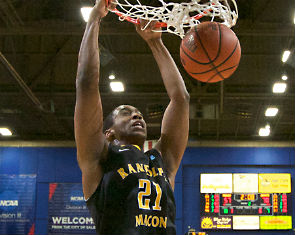
Other rule change ideas: allowing dunking in pre-game.
Other changes:
- Using review to determine if there was a shot clock violation any time during a game.
Good! The fact this wasn’t reviewable unless late in the second half was difficult to understand.
- Making Class B technical fouls one-shot fouls.
I’m okay with that. Picks up the pace of play and doesn’t hurt a team if a questionable hanging on the rim technical is called.
- Eliminating the five-second closely guarded rule for someone dribbling.
Eh… I’m not okay with this. I understand this is probably the result of instituting the 30-second shot-clock, but let’s not take something away from the defense who is pushing the issue while still giving the offense the ability to stall by simply dribbling the ball while standing still (or hardly moving) 40-feet from the basket.
- Removing the prohibition on dunking in pregame warmups.
I’m not okay with this. It goes to sportsmanship for me. I don’t want to see the pregame turn into a free-for-all I-can-outdo-you scenario. Not to mention the fact, people will regret this rule once a backboard, rim, or stanchion is broken and the game delayed or postponed to get it fixed. Pre-game is to get ready for the game, not for a dunking competition. Leave this rule alone.
Experimental Rule – Added Fouls:
If approved, you won’t see this until the 2016 non-NCAA postseason, but they will experiment with six individual fouls per player in the NIT and other tournaments. Not a fan. Leave it at five. It is six in the NBA for entertainment and protection of the stars. We don’t need to be adding another foul in the NCAA.
Now for the women’s rule changes (I’m leaving the most glaring to the end):

Could full court efforts be removed from women’s basketball in last minute of games?
Advancing the ball to midcourt:
The women’s rules committee has recommended teams be allowed to advance the ball to the front court following a timeout in the final minute of regulation or overtime. You know, like they do in the NBA!
So if there is a made basket, a rebound, or a change of possession and a team immediately calls timeout without trying to advance the ball up the court… they can be rewarded by moving the ball 65-plus feet up the court and inbound it from mid-court with no time coming off the clock. You read that right. Teams would be allowed to inbound the ball from the 28-foot mark which is essentially in front of their bench near the scorer’s table. Committee members state it would add more excitement to the end of games.
I say NO! This is a huge reward to a team if they are unable to stop the opponent defensively (made basket) and takes away from the other team’s ability to play solid defense in forcing a team to go the 80-94 feet up the court all while the clock counts down. Is the committee crazy? This is too easy! Sure it adds excitement, but it also would encourage teams to slack off on defense, allow a tying or lead-changing basket, knowing they can just move to within 28 feet of their own basket without any time coming off the clock for a chance to tie or win.
This isn’t the NBA who has the rule in place strictly for entertainment value. I don’t love the rule in the NBA and I am going to HATE it in the women’s game if it’s allowed.
I emphatically do NOT endorse!
10-second backcourt time:
Similar to the men, the women are proposing teams not get bailed out of the ten-second backcourt count unless the ball is deflected out of bounds by the defense, is a jump ball call where possession keeps it in the offensive team’s hands, or a technical foul is called on the offensive team.
I like most of this. Again, most of these reward the defense for their hard work while not bailing the offense out for struggling. I do think resetting the 10-seconds because of a jump ball doesn’t do enough to reward the defense. Imagine what it’s going to be like if a team calls timeout with just one second left to get the ball over midcourt and now they have inbound it! That will make for exciting moments in a game!
(Remember, the ten-second violation is based on the shot clock, not a ref’s hand count anymore.)
I endorse.
Post-Defense:
The recommendation is that defenders should be allowed to place their forearm or open hand with a bent elbow on an offensive post player who has their back to the basket. Forgive me for thinking that was already the rule! I know two hands can’t be used and pushing off is illegal, but I thought the rules allowed the defense to brace themselves.
I endorse since I thought it was a rule in the first place.
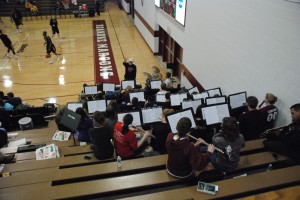
Could the college band or DJ be allowed to play more music at women’s games?
Bands/Amplified Music:
The committee apparently thinks the fans are bored during games and want to allow music to be played during any dead-ball situation. Seriously?! You think playing music more often is going to solve fans being bored at women’s games? Furthermore, any dead-ball situation? That has trouble written all over it. I can imagine situations where the home arena tries to push the limits of the rule and psych out the opponent heading to the line to shoot free-throws – or between free-throws – especially late in a close game. And can you image players starting to ask for “walk-up” music for when they head to the free-throw line? There is nothing good about this rule.
I do NOT endorse!
Quarters vs. Halves:
And here is the big one. The women’s committee is recommending the game be broken up into quarters and not halves.
From the NCAA press release:
“The rules committee is very excited about the change to the four-quarter format for the 2015-16 season. We believe this change, along with the associated changes to the timeout and foul rules, will address flow of the game and physicality. The overall format will strengthen the connection of college basketball with women’s basketball globally.”
– Michael Shafer, chair of the NCAA Women’s Basketball Rules Committee and women’s basketball coach at the University of Richmond.
“The game from high school to the professional and international levels will now be using the same four-quarter format, which makes sense globally.”
– Anucha Browne, NCAA vice president, women’s basketball championships
“The move to four quarters allows women’s collegiate basketball to align with all other levels of play and will be an exciting change for the future of the game. Having also been involved in the game at the Olympic and international levels, it is a positive move to see that all will be playing within the same basic structure going forward.”
– Dru Hancock, chair Division I Women’s Basketball Committee
“As the game becomes more global each year, it’s important that we start the process toward standardizing the rules. This is just the beginning of what I hope are many other changes to improve this great game.”
– Geno Auriemma, University of Connecticut women’s basketball coach
On paper, I understand the idea of changing the game to quarters. It is played in quarters from youth through international and professional. The college game is the only one played in halves. I agree with the quotes above that the game needs to be more similar to the global game. For that reason alone, I understand and appreciate the change.
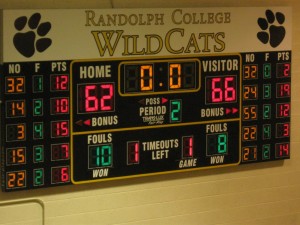
If the women’s rules committee gets their way, you won’t see scoreboards with these kinds of numbers in the future.
To clarify, here are the proposed changes:
- Four, ten-minute quarters.
- Teams would reach a two free throw bonus on a fifth foul in each quarter (no one-and-one shots) with fouls resetting each quarter except in overtime (as with current rules).
- Media timeouts would be reduced to just one per quarter under the five minute mark since there will be a media timeout between each quarter.
- Media games: each team would have four total timeouts (three 30-seconds and one 60-second) for the game, but one of the 30-second timeouts would have to be used in the first half (similar to current media-game timeout rules).
- Non-media games: each team would have five total timeouts (three 30-seconds and two 60-seconds) with four of them being carried over to the second half.
Again on paper, I have no problems with these changes. It addresses a number of things like too many stoppages in the game. This would actually flip the timeouts to giving more short versions and it would eliminate a media timeout (three for 20 minutes of basketball versus four or even five) and makes fouling a bigger penalty with the two-shot opportunity instead of starting with the one-and-one.
One thing I do see is that rules changes always get put in place considering the TV audience. Of course, that audience isn’t necessarily a factor in Division III or at least media rules aren’t a factor. So by changing the game to make it flow better especially with media in mind is a fool’s errand for just the Division I likes. What about the other 95-percent, as D3sports.com Executive Director Pat Coleman pointed out in a recent tweet, of teams and schools where that isn’t part of the equation?
The problem I have gets back to the beginning: the rule differences in the men’s and women’s game are already frustrating fans; this would just be the icing on the cake!

Making the rules the same makes it easier for the fans to enjoy.
Should the game be played in quarters as it is played everywhere else? Why not. But don’t move to quarters unless BOTH genders move in that direction. The men should implement quarters as well. I would be all for it if the men agreed that the pace of the game and such would be better if it were played in ten minute quarters. However, unless they move in that direction and both genders adopt the same rule change, I am completely against this.
Imagine being in an arena or watching games online, especially in the post-season, and seeing the women playing four quarters or watching the men playing halves. You then turn on the other gender’s game or stay to watch the second game of a double-header and all the rules are different. When a team is shooting free-throws and the kind of shots is different. The clock doesn’t start at 20:00 or there is a “3” or “4” under period on the scoreboard. You can’t keep track of how many timeouts each team has been given. It is only going to cause more confusion. I’m a public address announcer for basketball and I am quite sure I am not going to be able to keep all the rule differences straight.
I also don’t agree that the women’s game needs to have gimmicks (because, be honest, quarters is a gimmick if the men aren’t doing the same thing) to get people to watch or appreciate the game more. The fact they want to allow more music to be played in dead-ball situations screams they don’t think the women’s game can solve its problems without throwing in gimmicks. Moving the ball up to midcourt is a gimmick.
Is the women’s game different? Yes, just as women’s soccer is different than men’s soccer. However, it doesn’t mean you need to have completely different rules in place to make it stand out or be appreciated. And don’t pretend those who love men’s basketball are going to all of the sudden fall in love with women’s basketball because of the gimmicks. Or that you will gain more fans of women’s basketball because the rules are different. Those who love NASCAR don’t necessarily appreciate or even like Indy Car or Formula 1 and vice versa. Men’s and women’s basketball are different because of the way the game is played – above the rim; below the rim. It shouldn’t be different because they decided to start playing by different rules… or gimmicks.
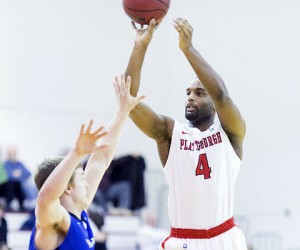 The second NCAA regional rankings have been released. Further rankings will follow on Feb. 24, along with one on Sunday, Feb. 28, which we do not get to see.
The second NCAA regional rankings have been released. Further rankings will follow on Feb. 24, along with one on Sunday, Feb. 28, which we do not get to see.
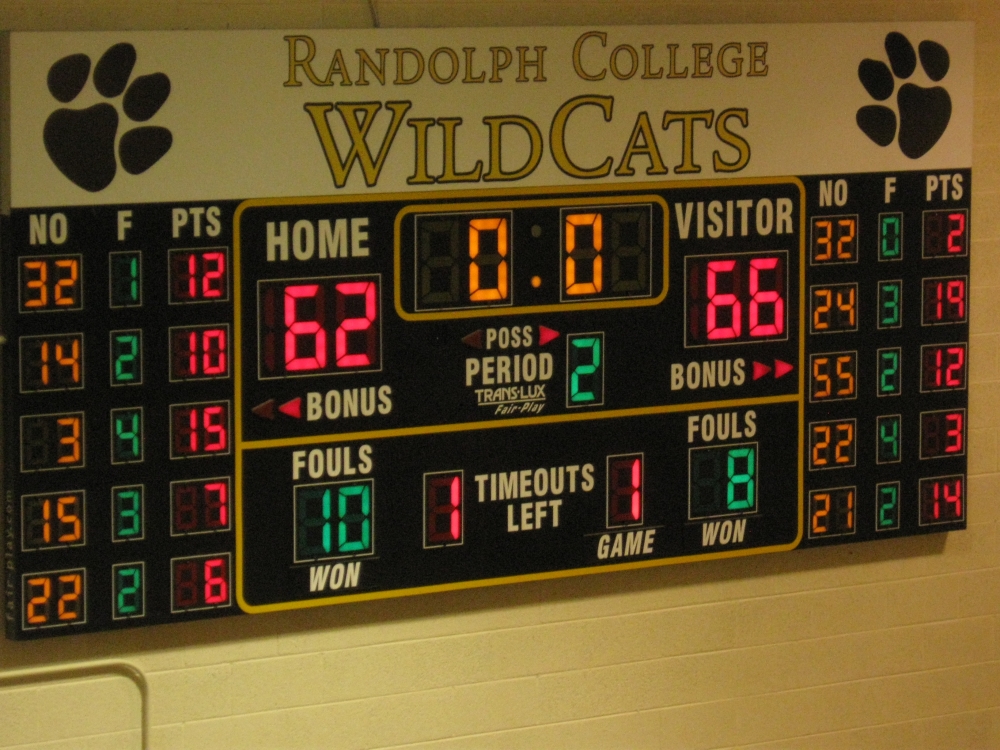







 The final public NCAA regional rankings were released Wednesday afternoon. The committees create one more ranking on Sunday, March 1, but do not release it to the public.
The final public NCAA regional rankings were released Wednesday afternoon. The committees create one more ranking on Sunday, March 1, but do not release it to the public.